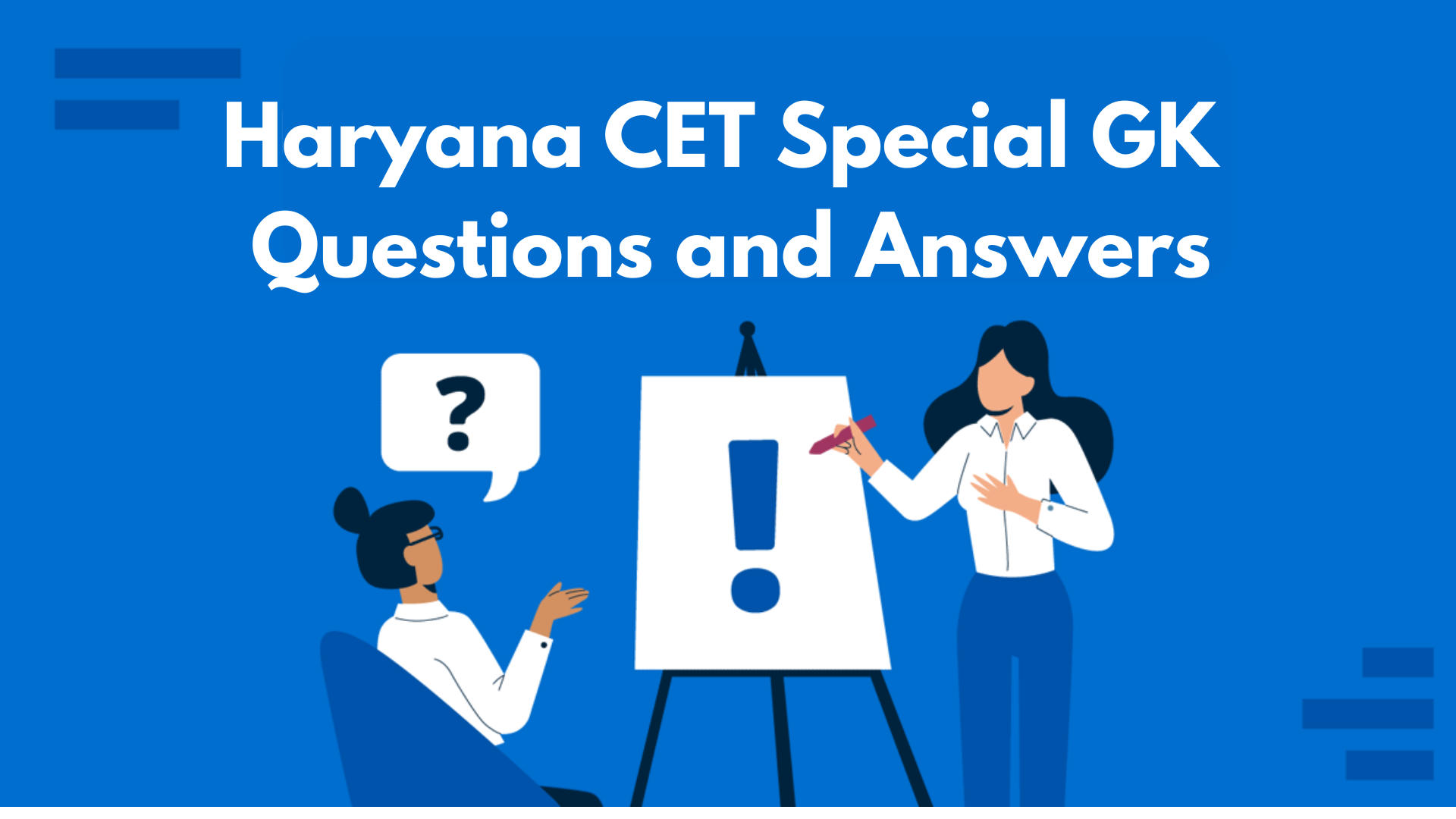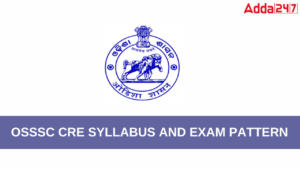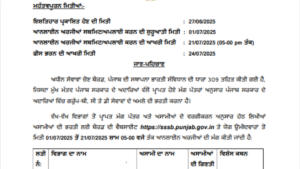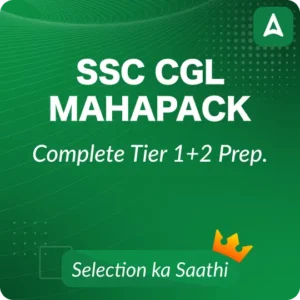Haryana CET Special GK Questions and Answers is made to help candidates who are preparing for the Haryana CET 2025 exam. It includes 30 carefully selected General Knowledge questions that are important for the exam for candidates. These questions are based on the latest exam pattern and focus on topics related to Haryana, such as its history, geography, and culture. Each question comes with a correct answer, making it easy for candidates to learn and revise for the exam effectively. Now, bookmark it and practice!
Haryana CET Special GK Questions and Answers
Q1. Which of the following plastics is used for making electrical switches?
(a) Polythene
(b) PVC
(c) Bakelite
(d) Teflon
Ans.(c)
Sol. The correct answer is (C) Bakelite.
- Bakelite is a type of phenolic resin and is commonly used in the manufacturing of electrical switches and other electrical components due to its insulating properties, heat resistance, and durability.
- It is a thermosetting plastic, which means it hardens permanently when heated and cannot be re-molded, making it ideal for electrical applications.
Other Plastics:
- Polythene (A): Mainly used for making packaging materials, bags, and containers.
- PVC (B): Used for making pipes, flooring, and insulation but not typically for electrical switches.
- Teflon (D): Known for its non-stick properties and is primarily used for cookware and electrical insulation in certain cables but not for making switches.
Q2. The National Beekeeping and Honey Mission (NBHM) Scheme was started in which year in Haryana?
(a) 2020
(b) 2018
(c) 2019
(d) 2017
Ans.(c)
Sol. The correct answer is (c) 2019.
- The National Beekeeping and Honey Mission (NBHM) was launched in 2019 in Haryana.
- The mission aims to promote beekeeping and honey production, especially in rural and tribal areas.
- It supports farmers by providing infrastructure, training, and improving honey quality.
Information Booster:
- Haryana is a leading agricultural state, known for high crop yields, especially in wheat and rice.
- Haryana has a significant contribution to India’s beekeeping industry.
- Chandigarh is the capital of Haryana.
- Important agricultural scheme: Pradhan Mantri Krishi Sinchayee Yojana (PMKSY) launched in 2015 to improve irrigation in Haryana.
Q3. How many villages have been associated with ‘Mhara Gaon, Jagmag Gaon’ Scheme till January 2022?
(a) 3,216
(b) 5,569
(c) 4,806
(d) 3,560
Ans.(b)
Sol. The correct answer is (b) 5,569.
- The ‘Mhara Gaon, Jagmag Gaon’ scheme is a rural electrification initiative launched by the Government of India.
- It aims to provide continuous and reliable electricity supply to rural villages across the country.
- As of January 2022, the scheme successfully reached 5,569 villages, marking a significant step in electrifying rural India.
- This program is part of a broader effort to ensure that villages in remote and underserved areas get access to electricity, thus improving living conditions, healthcare, education, and local economies.
Information Booster:
- The scheme is part of the Indian government’s efforts to provide 24×7 electricity to rural areas.
- Rural electrification is critical for enhancing educational, healthcare, and economic opportunities in these regions.
- The initiative aligns with India’s broader goals of energy sustainability and economic inclusion.
- Electricity access in rural India has seen significant improvements in recent years due to such schemes.
- The focus of the ‘Mhara Gaon, Jagmag Gaon’ scheme is on both rural development and environmental sustainability.
Q4. How many District Level Treasuries are there in Haryana according to the Haryana Economic Survey, 2021–22?
(a) 25
(b) 22
(c) 23
(d) 24
Ans.(c)
Sol. The correct answer is (C) 23.
- According to the Haryana Economic Survey 2021-22, there are 23 District Level Treasuries in Haryana.
Key Points:
- These treasuries handle financial transactions at the district level.
Additional Information:
- The Haryana Economic Survey provides insights into the state’s economic health and public finance management.
Q5. What is the total number of electricity consumers in Haryana till 2021–22?
(a) 68,57,609
(b) 71,17,384
(c) 72,17,283
(d) 73,07,992
Ans.(b)
Sol. The correct answer is (b) 71,17,384.
- The total number of electricity consumers in Haryana till the year 2021–22 is 71,17,384.
- Haryana has seen significant growth in electricity consumption, driven by urbanization, industrial development, and agricultural demand.
Information Booster:
- The Haryana Power Generation Corporation Limited (HPGCL) and Uttar Haryana Bijli Vitran Nigam Limited (UHBVNL) are key organizations responsible for the supply and distribution of electricity in the state.
- Haryana has also been a leader in the implementation of renewable energy sources like solar power.
Notable Facts About Haryana:
- Capital:
o Chandigarh is the joint capital of Haryana and Punjab.
- Geography:
o Haryana is located in the northern region of India, bordered by Punjab, Himachal Pradesh, Uttar Pradesh, Rajasthan, and the National Capital Territory (Delhi).
o The Yamuna is the major river in Haryana, flowing along its eastern boundary.
- Economy:
o Haryana is one of the wealthiest states in India, with a high per capita income.
o The state is known for agriculture and industry, especially in sectors like automobiles, IT, and textiles.
o Gurgaon (now Gurugram) is an important financial and technology hub, home to numerous multinational corporations.
- Agriculture:
o Haryana is a major producer of wheat, rice, cotton, sugarcane, and oilseeds.
o The state is a leader in Green Revolution agriculture and boasts high productivity in wheat and rice farming.
o Haryana’s contribution to India’s food security is significant due to its agricultural success.
Q6. What is the percentage of the total expenditure allocated towards Education in Haryana State Budget for the financial year 2022–23?
(a) 18.2%
(b) 16.4%
(c) 14.2%
(d) 15.2%
Ans.(c)
Sol. The Correct Answer is (C) 14.2%
- In the Haryana State Budget for the financial year 2022–23, 14.2% of the total expenditure was allocated to the Education sector.
- This allocation reflects the state’s commitment to improving educational infrastructure, enhancing quality education, and providing scholarships and other support to students.
Additional Information:
- This allocation is slightly below the national average of 15.2% for education expenditure.
- The budget also includes funding for various educational schemes, teacher training, and digital education programs.
- Haryana has been focusing on aligning its education system with the vision of the National Education Policy, 2020, aiming to make the quality of education in all government schools, colleges, and universities of the state the best in the country.
Q7. Which city is known as the ‘Heart of Haryana’?
(a) Ambala
(b) Jind
(c) Gurgaon (Gurugram)
(d) Panchkula
Ans.(b)
Sol. The correct answer is (B) Jind.
- Jind is known as the “Heart of Haryana” due to its central location in the state and its importance in terms of culture, economy, and history.
- Jind serves as a major administrative and cultural hub in Haryana.
Key Points:
- Jind is located in the north-western part of Haryana.
- It has a rich history and plays a significant role in the agricultural economy of the region.
Additional Information:
- Jind has also been known for its role in the development of Haryana as a state.
- The city is well connected to other parts of Haryana, contributing to its moniker “Heart of Haryana.”
Geography and Location:
- Capital: Chandigarh (also the joint capital of Punjab and Haryana).
- Location: Located in the northern part of India, Haryana is bordered by Punjab, Himachal Pradesh, Uttar Pradesh, Rajasthan, and Delhi.
- Area: Approximately 44,212 square kilometers.
- Major Rivers: Yamuna and Ghaggar-Hakra are the major rivers that flow through the state.
History:
- Formation: Haryana was carved out of Punjab on November 1, 1966, as a separate state, mainly for the linguistic and cultural differences.
- Ancient History: The state is historically significant, with ancient cities like Kurukshetra, which is the site of the famous battle in the Mahabharata. It is also home to Indus Valley Civilization sites like Rakhigarhi.
- Kurukshetra War: The battle of Kurukshetra, as narrated in the Mahabharata, is said to have taken place in the modern-day Kurukshetra district of Haryana.
Q8. What is the State Bird of Haryana?
(a) House Sparrow
(b) Great Egret
(c) Humming Bird
(d) Black Francolin
Ans.(d)
Sol. The correct answer is (d) Black Francolin.
- The Black Francolin (scientific name: Francolinus francolinus) is the state bird of Haryana.
- It is commonly found in the grasslands and agricultural fields of Haryana and is known for its distinctive call and beautiful plumage.
Information Booster:
- The Black Francolin is a terrestrial bird that prefers open grassland and cultivated fields.
- It is a member of the pheasant family and is known for its territorial behavior and unique vocalizations.
State symbols of Haryana:
| Symbol Type | State Symbol of Haryana |
|---|---|
| State Bird | Black Francolin |
| State Animal | Nilgai (Blue Bull) |
| State Flower | Lotus |
| State Tree | Peepal |
| State Butterfly | Common Jezebel |
| State Song | ‘Haryana Ki Shaan’ |
| State Animal (Marine) | Dolphin |
| State Fruit | Mango |
| State Dance | Ghoomar |
| State Language | Hindi |
Additional Details:
- State Bird – Black Francolin: Known for its distinct call, it is commonly found in Haryana’s grasslands and agricultural fields.
- State Animal – Nilgai: A type of antelope commonly found in Haryana and other parts of North India. It is the largest antelope in India.
- State Flower – Lotus: Symbolizes purity, beauty, and spirituality and is found across the state.
- State Tree – Peepal: Known for its cultural and religious significance in India, especially in Hinduism and Buddhism.
Q9. What is the One Time Cash Award for Mahavir Chakra Awardee?
(a) ₹ 2,00,00,000
(b) ₹ 1,00,00,000
(c) ₹ 4,00,00,000
(d) ₹ 6,00,00,000
Ans.(b)
Sol. The correct answer is (b) ₹1,00,00,000.
- The One Time Cash Award for the Mahavir Chakra awardee is ₹1,00,00,000.
- The Mahavir Chakra is the second-highest military decoration in India, awarded for acts of valor in the face of the enemy.
Information Booster:
- The Mahavir Chakra was established in 1950 and is awarded for exceptional bravery during wartime.
- This cash award is provided as a recognition of the bravery and sacrifice of the soldiers.
Mahavir Chakra (MVC)
- First Recipient: The first recipient of the Mahavir Chakra was Brigadier (later General) Rajinder Singh for his gallantry during the Indo-Pakistani War of 1947–48.
- Most Recent Recipient: As of 2023, the most recent recipient of the Mahavir Chakra was Captain (then Lieutenant) Dhan Singh Thapa of the Indian Army for his gallant actions during the Indo-China War of 1962.
- One-Time Cash Award: ₹1,00,00,000.
Other Gallantry Awards and Their Prize Money
- Param Vir Chakra (PVC)
o First Recipient: Major Somnath Sharma for his bravery in the 1947-48 Indo-Pakistani War.
o One-Time Cash Award: ₹2,00,00,000.
o The Param Vir Chakra is India’s highest military honor, awarded for the most conspicuous acts of bravery in the presence of the enemy.
- Vir Chakra (VC)
o First Recipient: Lieutenant Colonel Premindra Singh Bhagat for his bravery during the 1965 India-Pakistan war.
o One-Time Cash Award: ₹1,00,00,000.
- Ashoka Chakra
o First Recipient: Sardar Bhagat Singh, awarded posthumously for his sacrifice during the Indian freedom struggle.
o One-Time Cash Award: ₹1,00,00,000.
- Shaurya Chakra
o First Recipient: Major Dinesh Singh for his bravery during the Indo-Pakistani war of 1965.
o One-Time Cash Award: ₹50,00,000.
Important Points for Exam:
- The Mahavir Chakra is the second-highest gallantry award, awarded for acts of bravery in combat.
- The Param Vir Chakra is the highest military honor, followed by Mahavir Chakra, Vir Chakra, and Ashoka Chakra.
- The Shaurya Chakra is awarded for courageous acts that do not involve the direct presence of the enemy
Q10. The climate of Haryana is:
(a) Continental type
(b) Sub-Humid Temperate type
(c) Sub-Tropical Dry Continental type
(d) Sub-Humid Sub-Tropical type
Ans.(c)
Sol. The correct answer is (C) Sub-Tropical Dry Continental type.
- Haryana’s climate is classified as Sub-Tropical Dry Continental type, which is characterized by hot summers, moderate winters, and relatively low rainfall.
- The state experiences a marked difference between summer and winter temperatures, with very hot summers and cold winters, typical of continental climates.
- The rainfall is mostly confined to the monsoon season, but it is limited in quantity, making Haryana a dry region.
Indian Climate Facts:
- Diverse Climate Zones:
o India experiences a wide variety of climates, ranging from tropical to temperate zones. The country’s geographical diversity, including mountains, deserts, and coastlines, contributes to these varying climates.
- Classification of Climate:
o India generally follows the Köppen climate classification, which divides the country into several climatic regions:
- Tropical Wet (Am, Aw): Found in areas like Kerala and coastal regions.
- Tropical Dry (BSh, BSk): Found in regions like Rajasthan and parts of Gujarat.
- Subtropical Highland: Found in the Himalayan region.
- Temperate: Found in regions with moderate temperatures like parts of the northern plains.
- Monsoon Climate:
o Monsoon plays a crucial role in India’s climate, especially the Southwest Monsoon (June to September), which brings the majority of the country’s annual rainfall.
o The Northeast Monsoon (October to December) affects the southeastern coast, including Tamil Nadu.
- Seasons:
o India experiences four main seasons:
- Winter (December to February): Generally cool and dry, with temperatures in the northern plains dropping significantly.
- Summer (March to June): Hot and dry conditions prevail, especially in the northern and central parts.
- Monsoon (June to September): Heavy rainfall due to the Southwest Monsoon winds.
- Post-Monsoon (October to November): Transitional period with less rain but moderate temperatures.
- Temperature Extremes:
o The Thar Desert (Rajasthan) experiences some of the hottest temperatures in India, with summer temperatures often exceeding 50°C (122°F).
o On the other hand, Drass in Jammu & Kashmir, the coldest place in India, experiences temperatures as low as -50°C during winter.
Q11. Where is the Blue Bird lake located in Haryana?
(a) Hisar
(b) Jind
(c) Faridabad
(d) Karnal
Ans.(c)
Sol. The correct answer is (C) Faridabad.
- Blue Bird Lake is located in Faridabad, which is a city in the National Capital Region (NCR) of Haryana.
- The lake is known for its serene surroundings and is a popular spot for nature lovers and tourists.
Key Points:
- Faridabad is an industrial hub and part of the Delhi NCR, located close to the capital.
- The lake is a peaceful retreat and an important site for bird watching and recreational activities.
Major monuments of Haryana, along with their significance and locations:
| Monument | Location | Significance |
|---|---|---|
| Brahma Sarovar | Kurukshetra | Sacred water body linked to the Mahabharata; believed to be where creation began. |
| Sultanpur Bird Sanctuary | Gurgaon | Protected bird sanctuary known for migratory birds; ideal for birdwatching. |
| Sheesh Mahal | Patiala (Near Haryana) | Mughal-style marble palace decorated with intricate glasswork. |
| Pinjore Gardens | Pinjore (Panchkula) | Mughal-style terraced gardens with fountains and historical architecture. |
| Tomb of Sheikh Chilli | Kurukshetra | Tomb of the Sufi saint Sheikh Chilli; popular among pilgrims and history lovers. |
| Bhima Devi Temple | Pinjore (Panchkula) | Ancient Hindu temple known for intricate sculptures and religious importance. |
| Mata Mansa Devi Temple | Panchkula | Revered Hindu temple at the Shivalik foothills, dedicated to goddess Mansa Devi. |
| Feroze Shah Palace Complex | Hisar | Historic palace built by Feroze Shah Tughlaq, showcasing medieval architecture. |
| Rakhigarhi | Hisar | Significant archaeological site of the Indus Valley Civilization. |
| Gurudwara Nada Sahib | Panchkula | Important Sikh shrine associated with Guru Gobind Singh’s visit. |
| Krishna Museum | Kurukshetra | Museum dedicated to Lord Krishna and the Mahabharata period. |
| Battle of Panipat Memorial | Panipat | Memorial marking the three major battles of Panipat in Indian history. |
Q12. Which district of Haryana receives the highest rainfall?
(a) Hisar
(b) Ambala
(c) Kurukshetra
(d) Bhiwani
Ans.(b)
Sol. The correct answer is (B) Ambala.
- Ambala district in Haryana receives the highest rainfall compared to other districts in the state.
- It is located in the northeastern part of Haryana and has a higher level of precipitation due to its proximity to the foothills of the Shivalik range.
Information Booster:
- Ambala is known for its humid subtropical climate, with a high amount of rainfall during the monsoon season.
- The average annual rainfall in Ambala is around 800 to 1000 mm.
General Facts about Rainfall in India:
- Monsoon Climate:
o India experiences a monsoon climate, characterized by a distinct wet season from June to September.
o The southwest monsoon is the primary source of rainfall in India, which originates from the Arabian Sea and Bay of Bengal.
- Regional Variations:
o Coastal regions like Kerala, Konkan, and West Bengal receive heavy rainfall due to proximity to the sea.
o Himalayan foothills also experience heavy rainfall due to orographic effects, especially in places like Darjeeling and Shillong.
o Central and northwestern India (including states like Rajasthan, Haryana, and Gujarat) receive comparatively less rainfall and are considered semi-arid.
- Wettest Place in India:
o Mawsynram in Meghalaya holds the title of the wettest place in India and the world, with an annual average rainfall of about 11,871 mm.
o Cherrapunji, also in Meghalaya, is another location that receives significant rainfall, though less than Mawsynram.
- Rainfall Distribution:
o India receives about 1,170 mm of average annual rainfall, with 60-80% of it occurring during the monsoon season.
o Western Ghats and Eastern Ghats are among the wettest regions due to the monsoon winds being forced upwards by the mountains, resulting in heavy rainfall.
Q13. When was the first permanent Lok Adalat set up in Haryana?
(a) 17th January, 1955
(b) 10th May, 2005
(c) 7th August, 1998
(d) 1st November, 1966
Ans.(c)
Sol. The correct answer is (c) 7th August, 1998.
- The first permanent Lok Adalat in Haryana was set up on 7th August, 1998.
- Lok Adalats are alternative dispute resolution forums that aim to provide speedy and cost-effective justice. They are an essential part of the legal system in India, especially for resolving civil and family disputes without going through the formal court system.
What is a Lok Adalat?
- Lok Adalat (People’s Court) is an alternative dispute resolution system where disputes are resolved outside the formal judicial system.
- It is a mechanism for the settlement of disputes through conciliation and compromise.
- Lok Adalats help in reducing the backlog of cases in courts by encouraging parties to settle their disputes amicably.
History of Lok Adalats in India:
- Origin in 1980s:
o The concept of Lok Adalats was first introduced in India in the 1980s as part of a movement to make the justice delivery system more accessible to the public.
o The idea of Lok Adalats was drawn from the traditional panchayat system, where elders would settle disputes in villages and communities.
- Legal Backing through the Legal Services Authorities Act, 1987:
o The Legal Services Authorities Act, 1987, provided legal backing to the concept of Lok Adalats. The Act established the National Legal Services Authority (NALSA) and State Legal Services Authorities (SLSAs) to promote legal services and ensure free legal aid to the marginalized sections of society.
o The National Lok Adalat was institutionalized to resolve pending cases in the judicial system.
- First Lok Adalat:
o The first Lok Adalat was organized in 1982 in Guwahati, Assam, under the guidance of the then Chief Justice of India, Justice P.N. Bhagwati.
o Lok Adalats were later implemented across the country to address the growing number of cases in courts.
Q14. Which of the following committees is appointed by the Panchayat Samiti according to Chapter X of the Haryana Panchayati Raj Act, 1994?
(a) Social Justice Committee
(b) General Committee
(c) Health and Welfare Committee
(d) Finance, Audit and Planning Committee
Ans.(d)
Sol. The correct answer is (d) Finance, Audit and Planning Committee.
- According to Chapter X of the Haryana Panchayati Raj Act, 1994, the Finance, Audit and Planning Committee is appointed by the Panchayat Samiti.
- This committee is responsible for overseeing the financial planning, auditing, and budgeting of the Panchayat Samiti’s activities.
Key Points:
- The committee ensures the proper utilization of funds and the financial transparency of the Panchayat Samiti.
- The act mandates the establishment of such committees to maintain effective financial management in rural local governance.
Famous Committees of Haryana:
| Committee Name | Purpose/Function | Key Role |
|---|---|---|
| State Finance Commission | Ensures proper distribution of financial resources between the state and local bodies. | Allocates funds to Panchayats and Urban Local Bodies (ULBs). |
| Social Justice and Empowerment Committee | Focuses on the welfare and empowerment of marginalized communities (SCs, STs, OBCs). | Implements social welfare, education, and empowerment schemes. |
| Education Committee | Handles educational reforms and policy implementation across schools and institutions. | Ensures quality education and grassroots-level reforms. |
| Health and Family Welfare Committee | Works to improve healthcare infrastructure and family welfare programs in the state. | Implements healthcare services, immunization, and family planning. |
| Rural Development Committee | Plans and monitors rural development initiatives and schemes in Haryana. | Oversees rural infrastructure and welfare project implementation. |
Famous Tirth Sthals in Haryana:
| Tirth Sthal | Location | Significance |
|---|---|---|
| Kurukshetra | Kurukshetra | The legendary battlefield of the Mahabharata; site where the Bhagavad Gita was delivered. |
| Pehowa | Kurukshetra District | Known for Ashwamedha Yajna performed by the Pandavas; important pilgrimage site. |
| Bhimnala (Bhimakali Temple) | Chhachhrauli | Temple dedicated to Goddess Bhimakali, a form of Durga; a site of deep reverence. |
| Mata Mansa Devi Temple | Bilaspur, near Panchkula | Sacred temple where devotees believe their wishes are fulfilled by Mata Mansa Devi. |
| Sheetala Mata Temple | Gurgaon | Popular temple of Mata Sheetala, worshipped for protection from smallpox and other diseases. |
| Baba Farid’s Tomb | Faridabad | Tomb of Sufi saint Baba Farid; a spiritual center for devotees and pilgrims. |
| Narnaul | Mahendergarh District | Ancient town with spiritual significance; linked with Mata Sheetala legends. |
| Tomb of Sheikh Chehli | Near Narnaul | Memorial of the Sufi saint Sheikh Chehli; a symbol of spiritual harmony. |
Q16. Match the following names of ancient cities in Haryana given in Column I with their present names in Column II:
(a) I–b; II–c; III–d; IV–a
(b) ) I–a; II–d; III–b; IV–c
(c) I–d; II–a; III–b; IV–c
(d) I–c; II–b; III–a; IV–d
Ans.(a)
Sol. The correct answer is (a) I–b; II–c; III–d; IV–a.
- I. Sairishaka → b. Kaithal
Sairishaka, an ancient city, is identified with the modern city of Kaithal.
- II. Kanoud → c. Panipat
The ancient city of Kanoud corresponds to Panipat, which is a significant historical city in Haryana.
- III. Kapisthal → d. Mahendragarh
Kapisthal, an important ancient place, is associated with the modern city of Mahendragarh.
- IV. Panduprastha → a. Sirsa
The ancient city Panduprastha is identified with Sirsa in the present day.
Final Matching:
- I. Sairishaka → b. Kaithal
- II. Kanoud → c. Panipat
- III. Kapisthal → d. Mahendragh
- IV. Panduprastha → a. Sirsa
Q17. When was the famous Badkhal lake of Haryana developed?
(a) In 1940
(b) In 1947
(c) In 1950
(d) In 1974
Ans.(b)
Sol. The correct answer is (B) In 1947.
- The famous Badkhal Lake in Haryana was developed in 1947. It is located near Faridabad and was initially created as a reservoir for drinking water.
- Over time, the lake became a popular tourist destination, attracting visitors due to its scenic beauty. However, due to environmental factors and human intervention, the lake faced significant challenges, including drying up.
Notable Milestones:
- 1979 – The Bhakra Nangal Dam project was completed, significantly benefiting Haryana’s irrigation and water supply.
- 1980s-1990s – Growth of industrial sectors in Gurgaon, transforming it into a leading industrial city.
- 1998 – Establishment of Rajiv Gandhi Education City in Sonipat for education and research facilities.
- 2010 – Haryana was at the forefront in India’s Commonwealth Games 2010, especially in wrestling and boxing, showing strength in sports.
- 2021 – Haryana’s highest contribution to India’s milk production continued, earning it the title of the “Milk Bowl of India.”
Famous Years in Haryana’s History:
| Year | Event & Significance |
|---|---|
| 1966 | Formation of Haryana – Haryana was carved out of Punjab on 1st November 1966 based on linguistic lines. Celebrated as Haryana Day. |
| 1991 | Economic Liberalization – Haryana benefited from national reforms, leading to rapid infrastructure and industrial growth, especially in Gurgaon. |
| 1996 | Launch of HUDA – The Haryana Urban Development Authority was established, accelerating urban development in the state. |
| 2000 | Growth in IT Sector – Gurgaon emerged as a major IT and service industry hub, boosting Haryana’s tech economy. |
| 2014 | Political Shift – The BJP formed the government under Manohar Lal Khattar, initiating governance reforms and policy changes. |
| 2016 | Yoga & Ayurveda Boom – Patanjali Ayurved, led by Baba Ramdev, grew rapidly, establishing Haryana as a hub for yoga and Ayurvedic products. |
| 2020 | Farmers’ Protests – Haryana became a focal point during the nationwide farmers’ protests against the central farm laws. |
| 2021 | Smart Cities Vision – Haryana launched smart city projects in cities like Gurugram to promote sustainability and better urban planning. |
| 2025 | Recent Economic Reforms – The state continues to see reforms in agriculture, education, and industry, especially in Gurgaon and Faridabad. |
Q18. After the death of Najib-ad-Dawlah in 1770 AD, who ascended his throne?
(a) Ahmad Shah Abdali
(b) Jabit Khan
(c) Najaf Khan
(d) Mahadji Scindia
Ans.(c)
Sol. The correct answer is (C) Najaf Khan.
- After the death of Najib-ad-Dawlah in 1770 AD, Najaf Khan, a prominent military leader, ascended to power.
- Najib-ad-Dawlah was a prominent Afghan leader and the Nawab of Oudh. His death led to a shift in the power dynamics in the Mughal Empire, with Najaf Khan playing a key role in the subsequent politics.
Information Booster:
- Najaf Khan was a skilled military commander who played an important role in defending the Mughal Empire and later served under Shah Alam II.
- He was a key figure during the Maratha and Mughal power struggles in northern India during the 18th century.
Nawab of Oudh (Awadh)
- Oudh (Awadh) was a prominent region in northern India, located in present-day Uttar Pradesh, with Lucknow as its capital.
- The Nawabs of Oudh were the rulers of this region from the late 17th century until the British annexation in the mid-19th century.
Key Historical Figures:
- Saadat Ali Khan I (1719-1739)
o The first Nawab of Oudh, appointed by the Mughal emperor Muhammad Shah in 1722.
o The region of Oudh was granted to Saadat Ali Khan as a semi-independent province under the Mughal Empire.
o Under his leadership, Oudh grew in political importance and became a key player in the politics of northern India.
- Shuja-ud-Daula (1754-1775)
o One of the most significant Nawabs of Oudh, he is known for his role in the Battle of Buxar (1764), where he allied with the Mughals and Mir Qasim of Bengal against the British East India Company.
o After the defeat at Buxar, Shuja-ud-Daula was forced to pay a huge indemnity to the British, which weakened his position.
- Asaf-ud-Daula (1775-1797)
o Known for his contributions to the cultural and architectural development of Lucknow.
o Asaf-ud-Daula built many iconic structures, including the Bada Imambara and Rumi Darwaza, which are landmarks of Lucknow.
o He also played a role in consolidating the authority of the Nawabs and promoting economic prosperity in the region.
- Nawab Wajid Ali Shah (1847-1856)
o The last Nawab of Oudh, he is perhaps the most famous Nawab due to his artistic patronage and the events leading to the annexation of Oudh by the British in 1856.
o Wajid Ali Shah was a great patron of music, dance, and literature, and he is credited with popularizing the classical dance form Kathak.
o In 1856, Lord Dalhousie, the British Governor-General, annexed Oudh under the doctrine of lapse, and Wajid Ali Shah was exiled to Calcutta (now Kolkata), marking the end of the independent Nawabi rule.
Significant Events and Decline:
- Battle of Buxar (1764): The Nawab of Oudh, Shuja-ud-Daula, played a key role in the battle, where the combined forces of the Mughals, Oudh, and Bengal were defeated by the British East India Company.
- Annexation of Oudh (1856): The British annexed Oudh through the Doctrine of Lapse after the death of the heir apparent. This was a turning point, leading to the disbandment of the Nawab’s kingdom.
Q19. Consider the following statements:
(a) Chope is a style of shawl manufactured in Haryana.
(b) This shawl style is also known as Phulkari.
Which of the statements given above is/are correct?
(a) Only (a)
(b) Only (b)
(c) Both (a) and (b)
(d) Neither (a) or (b)
Ans.(d)
Sol. The correct answer is (D) Neither (a) nor (b).
Explanation:
- Statement (a): Chope is not a style of shawl manufactured in Haryana. Chope is a traditional style of embroidered shawl worn in parts of Punjab and is not specifically associated with Haryana. It is different from the shawl styles produced in Haryana.
- Statement (b): Phulkari is a traditional form of embroidery that originated in Punjab and is not the same as the Chope style. Phulkari involves intricate floral embroidery work and is not specifically a shawl style but can be used on various fabrics, including shawls.
Conclusion:
- Both statements are incorrect, as Chope and Phulkari are related to different styles and regions, primarily Punjab, and not exclusively to Haryana.
Haryana’s culture:
- Language and Literature
- Official Language: The official language of Haryana is Hindi, and the state’s regional dialect is Haryanvi. Haryanvi is widely spoken in rural areas and has distinct linguistic features that set it apart from Hindi.
- Literature: Haryanvi literature is known for its folk tales, poetry, and ballads. Prominent literary figures like Lal Chand Yamla Jat and Surajmal Jat contributed to its poetic and cultural richness.
- Festivals and Celebrations
- Baisakhi: Celebrated as the harvest festival, Baisakhi marks the onset of the harvest season in Haryana. It is also a time for people to participate in traditional dances and prayers.
- Teej: Teej is celebrated by women in Haryana with great enthusiasm, marking the monsoon season. Women celebrate by fasting and dressing in colorful attire.
- Makar Sankranti: This festival celebrates the winter harvest, and people celebrate with kite flying and making traditional sweets like tilgul (made with sesame and jaggery).
- Lohri: A major festival in Haryana, Lohri is associated with the harvest of the Rabi crops and is celebrated with bonfires, singing traditional folk songs, and dancing.
- Folk Music and Dance
- Folk Music: Haryana has a rich tradition of folk music that includes Ragini, Dhamal, and Khori. These are traditional songs that depict rural life, love, and seasonal themes.
- Dance Forms:
o Ghoomar: A popular folk dance performed by women, typically during festivals.
o Dhamal: A high-energy dance performed during the harvest season or religious festivals.
o Phag: A dance associated with the festival of Holi, where people sing and dance in a circular pattern.
- Handicrafts and Art
- Phulkari Embroidery: Phulkari, a form of traditional embroidery, is famous in Haryana and Punjab. It is often done on shawls, dupattas, and other garments and is known for its vibrant floral patterns.
- Durries and Carpets: Haryana is known for its handwoven durries (rugs) and carpets made with cotton and wool. The designs often reflect rural motifs.
- Pottery: Terracotta pottery is a popular craft in Haryana, with artisans creating beautiful, handcrafted pots and figurines.
- Cuisine
- Staple Foods: The cuisine of Haryana is heavily influenced by its agrarian economy, and wheat is the staple food. Some common dishes include roti, paratha, dal, curd, and sabzi (vegetables).
- Traditional Dishes:
o Bajra Khichdi: A traditional dish made from millet and lentils, often served with ghee (clarified butter).
o Kadhi: A yogurt-based curry made with gram flour, served with rice.
o Makki di Roti and Sarson da Saag: Popular in Haryana, this dish consists of corn roti served with mustard greens.
o Churma: A sweet dish made from wheat flour, sugar, and ghee, commonly served with dal baati (a type of bread)
Q20. Which dance form of Haryana is dedicated to Shiva and Parvati?
(a) Manjira Dance
(b) Lasya Dance
(c) Ratwai Dance
(d) Gangor Dance
Ans.(d)
Sol. The correct answer is (d) Gangor Dance.
- Gangor Dance is a traditional dance form from Haryana dedicated to Shiva and Parvati.
- It is performed during the Gangor festival, which is celebrated in honor of Goddess Parvati and her union with Lord Shiva.
- The dance is an integral part of the festival, where women participate in various forms of folk dances and songs to celebrate the divine couple.
Key Points:
- Gangor Festival is celebrated in the month of Chaitra (March-April).
- The dance is performed by women, wearing traditional attire and carrying idols of Goddess Parvati and Lord Shiva during the festival.
- Gangor Dance is known for its rhythmic movements and joyful expressions, reflecting devotion to the deities.
Additional Information:
- (A) Manjira Dance – A folk dance of Haryana involving the use of cymbals or manjiras, but not dedicated to Shiva and Parvati.
- (B) Lasya Dance – A classical dance form associated with grace and femininity, but not dedicated to Shiva and Parvati.
- (C) Ratwai Dance – A traditional dance form, but not specifically associated with Shiva and Parvati
Q21. Where is the Chhaj ornament worn by women?
(a) Forehead
(b) Neck
(c) Hand
(d) Waist
Ans.(b)
Sol. The correct answer is (B) Neck.
- The Chhaj ornament is traditionally worn around the neck by women in certain parts of India, especially in Haryana and Rajasthan.
- It is a piece of jewelry that is typically made of gold or silver and is worn by married women as a symbol of marital status and beauty.
Information Booster:
- The Chhaj is part of traditional attire and is often worn during festivals and marriage ceremonies.
- In some cultures, it is also a part of the bride’s jewelry set during the wedding ceremony
Q22. Which Haryanvi film released in 2015 received two National Awards?
(a) Beera Shera
(b) Chand Chakori
(c) Pagdi
(d) Veer Ghatotkach
Ans.(c)
Sol. The correct answer is (C) Pagdi.
- Pagdi, a Haryanvi film released in 2015, won two National Film Awards.
- The film was recognized for its social message and poignant portrayal of rural life and traditions in Haryana.
- It deals with the complex issue of honor and tradition and how these affect the lives of people, particularly women, in rural Haryana.
- Overview of National Film Awards
- The National Film Awards (NFA) are presented by the President of India every year to honor excellence in cinematic achievements in the Indian film industry.
- They are organized by the Directorate of Film Festivals, under the Ministry of Information and Broadcasting of India.
- The awards were instituted in 1954 by the Government of India to celebrate the achievements of Indian cinema and to encourage the growth of the film industry in India.
- Categories of National Film Awards
The awards are divided into several categories, including:
- Feature Films: Awarded for the best feature films made in Indian cinema, with different regional language films being considered in the respective languages.
- Non-Feature Films: For documentaries, short films, and other non-feature films.
- Best Actor and Actress: Separate awards for male and female performances in lead roles.
- Best Direction: For the best director in Indian cinema.
- Best Music Direction: Recognizes the best music composers of the year.
- Best Cinematography: For the best work in cinematography.
- Best Screenplay: Recognizes excellence in writing.
- Best Regional Films: Separate awards for the best films in different regional languages such as Bengali, Tamil, Telugu, Kannada, Marathi, etc.
- Best Popular Film Providing Wholesome Entertainment: An award for films that blend commercial success with quality content.
- Lifetime Achievement Award: Given for outstanding contributions to the field of Indian cinema over a long career.
- The History and Evolution of the Awards
- 1954: The National Film Awards were first presented in 1954, honoring the best films of the previous year. The first ceremony was held at New Delhi and was presided over by the then President of India, Dr. Rajendra Prasad.
- Best Feature Film: The first-ever Best Feature Film Award went to the film “Shyamchi Aai” (Marathi), directed by P.K. Atre.
- Best Director: The first Best Director Award went to Satyajit Ray for his film “Pather Panchali” (1955), which is considered a landmark in Indian cinema.
Q23. Sportsperson Seema Punia Antil hails from which village in Haryana?
(a) Ujhana
(b) Khandra
(c) Khewda
(d) Kaluwas
Ans.(a)
Sol. The correct answer is (A) Ujhana.
- Seema Punia Antil, a prominent Indian discus thrower and Olympian, hails from the village of Ujhana in Sonipat district, Haryana.
- She is known for her exceptional achievements in athletics, including multiple national championships and international medals in the discus throw event.
Key Points:
- Seema Punia has represented India in various international competitions, including the Olympics and World Championships.
- She is one of India’s top athletes in track and field, specifically in discus throw.
- Her contribution to sports has made her an icon, especially in Haryana, known for producing numerous sports talents.
Q24. In which year was SAI National Boxing Academy (Rohtak) inaugurated?
(a) 2019
(b) 2018
(c) 2016
(d) 2017
Ans.(b)
Sol. The correct answer is (B) 2018.
- The SAI National Boxing Academy was inaugurated in 2018 in Rohtak, Haryana.
- This academy aims to provide world-class training facilities for boxing and to nurture young talent for international competitions like the Olympics and World Championships.
- It is a major step towards promoting sports development in India, especially in the field of boxing, with a focus on providing high-quality coaching and infrastructure.
Information Booster:
- The academy is managed by the Sports Authority of India (SAI) and is equipped with modern facilities for training and rehabilitation.
- Haryana has produced numerous boxing champions, including Vijender Singh and Mary Kom, making the state a key hub for the sport.
Q25. Which among the following personalities of Haryana received the Padma Shri award in the field of sports?
(a) Sandeep Singh
(b) Sumit Antil
(c) Bajrang Punia
(d) Yuvraj Singh
Ans.(a)
Sol. The correct answer is (A) Sandeep Singh.
- Sandeep Singh, a former Indian field hockey player and former captain of the Indian national team, received the Padma Shri award in the field of sports.
- He is known for his contribution to Indian hockey, particularly as a drag flick specialist and for his leadership in various international tournaments.
- Sandeep Singh was also instrumental in India’s success at the 2010 World Cup and Asian Games, and his journey in the sport was also depicted in the Bollywood film “Soorma”
Q26. Which language was accorded the status of second official language in Haryana in 2010?
(a) English
(b) Urdu
(c) Punjabi
(d) Haryanvi
Ans.(b)
Sol. The correct answer is (B) Urdu.
- Urdu was accorded the status of the second official language in Haryana in 2010.
- This decision was made to promote the inclusion of Urdu speakers in the state’s official communication and to recognize the language’s cultural significance in Haryana.
Key Points:
- The move aimed to provide greater accessibility and support for the Urdu-speaking community in Haryana, especially for government communication and education.
- Urdu is widely spoken in parts of Haryana, especially in the Mewat region.
Q27. What is the name of the plant group whose plants bear naked seeds and are usually perennial, evergreen and woody?
(a) Gymnosperms
(b) Angiosperms
(c) Pteridophyta
(d) Bryophyta
Ans.(a)
Sol. The correct answer is (a) Gymnosperms.
- Gymnosperms are a group of plants whose seeds are exposed or “naked,” meaning they are not enclosed in a fruit.
- They are usually perennial, evergreen, and woody, examples being pine trees, fir trees, and cypress trees.
- Gymnosperms include plants like conifers (e.g., pines, spruces), cycads, Ginkgo, and Gnetophytes.
Information Booster:
- Gymnosperms produce seeds that are typically found in cones (e.g., conifers).
- They do not produce flowers or fruits, distinguishing them from angiosperms (flowering plants).
- Gymnosperms are important for forestry, providing timber, paper, and other products.
Summary of Differences:
| Group | Key Feature | Examples |
|---|---|---|
| Gymnosperms | Naked seeds (no flowers or fruit) | Pine, Fir, Ginkgo, Cycad |
| Angiosperms | Enclosed seeds (with flowers and fruit) | Rose, Mango, Oak, Sunflower |
| Pteridophyta | Seedless plants, reproduce via spores | Ferns, Horsetails, Clubmosses |
| Bryophyta | Non-vascular and seedless | Mosses, Liverworts, Hornworts |
Q28. What was the slogan of the ‘Patient Safety Day’ which was observed on 17th September 2022?
(a) “Health Without Medication”
(b) “Meditation Replaces Medication”
(c) “Medication Without Harm”
(d) “Health With Yoga”
Ans.(c)
Sol. The correct answer is (c) “Medication Without Harm.”
- The slogan for Patient Safety Day, observed on 17th September 2022, was “Medication Without Harm.”
- This day is observed globally to raise awareness about patient safety and promote the safe use of medication to avoid medical errors and harm to patients.
Key Points:
- Patient Safety Day is an initiative by the World Health Organization (WHO) to highlight the importance of ensuring safety during patient care, especially in medical settings.
- The slogan emphasizes minimizing medication errors and preventing harm caused by unsafe medication practices.
Q29. In Olympics, India has won the maximum number of Gold Medals under which category since 1900 to 2020?
(a) Shooting
(b) Hockey
(c) Boxing
(d) Wrestling
Ans.(b)
Sol. The correct answer is (B) Hockey.
- India has won the maximum number of Gold Medals in the Olympic Games under the sport of Hockey.
- India’s Hockey Team has won a total of 8 Gold Medals in Olympic history.
- India dominated Olympic hockey from 1928 to 1956, winning 6 consecutive gold medals during this period, which remains an impressive record.
- The last Olympic gold in hockey was won in 1980 in Moscow.
Information Booster:
- India won its first Olympic gold medal in hockey in 1928 at the Amsterdam Olympics.
- Dhyan Chand, known as the “Hockey Wizard”, is one of India’s most legendary athletes and played a pivotal role in the country’s Olympic success.
- Other sports like shooting, boxing, and wrestling have seen India’s successes, but hockey holds the record for the most gold medals.
Additional Information:
(a) Shooting – India has won a few gold medals in shooting but not as many as in hockey.
(b) Hockey – Correct, with 8 Olympic golds.
(c) Boxing – India has won one Olympic gold in boxing, by Vijender Singh in 2008.
(d) Wrestling – India has won one gold in wrestling, by Sushil Kumar in 2008.
Q30. Which among the following statements is/are correct with regard to the amendment of the Indian Constitution?
(a) Parliament has the power to amend any part of the Constitution except for Part III.
(b) A Constitutional Amendment Bill can only be introduced in the Lok Sabha.
(c) The Constitutional Amendment Bill once passed needs the assent of the President.
Choose the correct option from the codes given below:
(a) (a) and (c)
(b) Only (b)
(c) Only (c)
(d) (a) and (b)
Ans.(a)
Sol. The Correct Answer is (A) (a) and (c)
- Statement (a):
o Parliament has the power to amend any part of the Constitution except for Part III (Fundamental Rights):
- This statement is incorrect because Parliament can amend Part III (Fundamental Rights) as well. However, the amendment of Fundamental Rights is subject to certain conditions.
- Article 368 of the Indian Constitution provides for the process of Constitutional amendments. It empowers Parliament to amend the Constitution but with certain limitations.
- Article 368 allows Parliament to amend any part of the Constitution, including Part III (Fundamental Rights). However, amendments related to Fundamental Rights cannot be altered in a way that would violate their basic structure, as established by the Supreme Court in the Kesavananda Bharati case (1973).
- In addition, if amendments affect the federal structure of the Constitution (e.g., the distribution of powers between the Union and States), the consent of half the States is required (via a special procedure under Article 368).
- Statement (b):
o A Constitutional Amendment Bill can only be introduced in the Lok Sabha:
- This statement is incorrect.
- A Constitutional Amendment Bill can be introduced in either Lok Sabha or Rajya Sabha, and it does not need to be introduced in just one House.
- Article 368 of the Constitution allows both Houses of Parliament to introduce the Bill. It can be introduced in either of the two Houses and needs to be passed by a two-thirds majority in each House.
- Statement (c):
o The Constitutional Amendment Bill once passed needs the assent of the President:
- This statement is correct.
- According to Article 368, once the Bill is passed by both Houses of Parliament, it requires the assent of the President to become a law.
- The President’s assent is required for the Bill to be enacted, just like any other law. However, the President cannot withhold assent to an amendment.
Constitutional Articles and Amendments Related to the Amendment of the Indian Constitution:
- Article 368 – Power of Parliament to Amend the Constitution:
o Article 368 lays down the procedure for amending the Constitution. It states that Parliament can amend the Constitution through the procedure specified in the article. However, amendments affecting certain provisions require special procedures.
- Special Procedure for Amendments: The Bill must be passed by a two-thirds majority in each House of Parliament. If the amendment concerns the federal structure (such as the powers of States), the Bill must also be ratified by at least half the States before it can become law.
- Basic Structure Doctrine:
o Kesavananda Bharati Case (1973): The Supreme Court of India held that while Parliament can amend the Constitution, it cannot alter its basic structure. This doctrine prevents Parliament from amending essential features of the Constitution, including fundamental rights, secularism, democracy, and the federal structure.
- Article 368(2):
o Specifies that for an amendment to certain provisions, such as those dealing with the federal structure, it must be ratified by at least half of the States.
o This provision is invoked when the amendment involves the distribution of powers between the Union and the States.
Key Amendments to the Indian Constitution:
- The 1st Amendment (1951):
o The first amendment to the Constitution dealt with the restriction of freedom of speech and the rights of minorities. It also addressed the preservation of the national integrity.
- The 42nd Amendment (1976):
o Known as the “Mini-Constitution,” this amendment made major changes to the Constitution, including reducing the power of the judiciary and strengthening the powers of the executive. It also added the fundamental duties of citizens.
- The 44th Amendment (1978):
o This amendment restored the power of the judiciary after the 42nd Amendment and made changes regarding the Right to Property, which was made a legal right rather than a fundamental right.
- The 73rd and 74th Amendments (1992):
o These amendments brought about constitutional recognition for Panchayats (rural local self-government) and Municipalities (urban local self-government), empowering them with greater functions and financial powers.
- The 86th Amendment (2002):
o This amendment made education a fundamental right for children aged 6-14 by inserting Article 21-A to the Constitution.





 OSSSC CRE Syllabus 2025 Prelims and Main...
OSSSC CRE Syllabus 2025 Prelims and Main...
 PSSSB Recruitment 2025, Last Date To App...
PSSSB Recruitment 2025, Last Date To App...
 SSC Selection Post Admit Card 2025 Out, ...
SSC Selection Post Admit Card 2025 Out, ...




 Adda247 Job portal has complete information about all Sarkari Jobs and Naukri Alerts, its latest recruitment notifications, from all state and national level jobs and their updates.
Adda247 Job portal has complete information about all Sarkari Jobs and Naukri Alerts, its latest recruitment notifications, from all state and national level jobs and their updates.